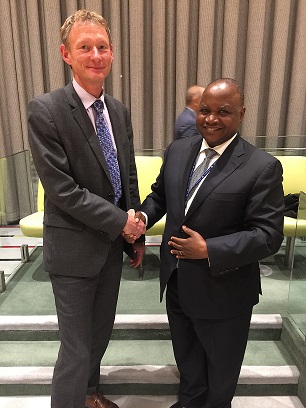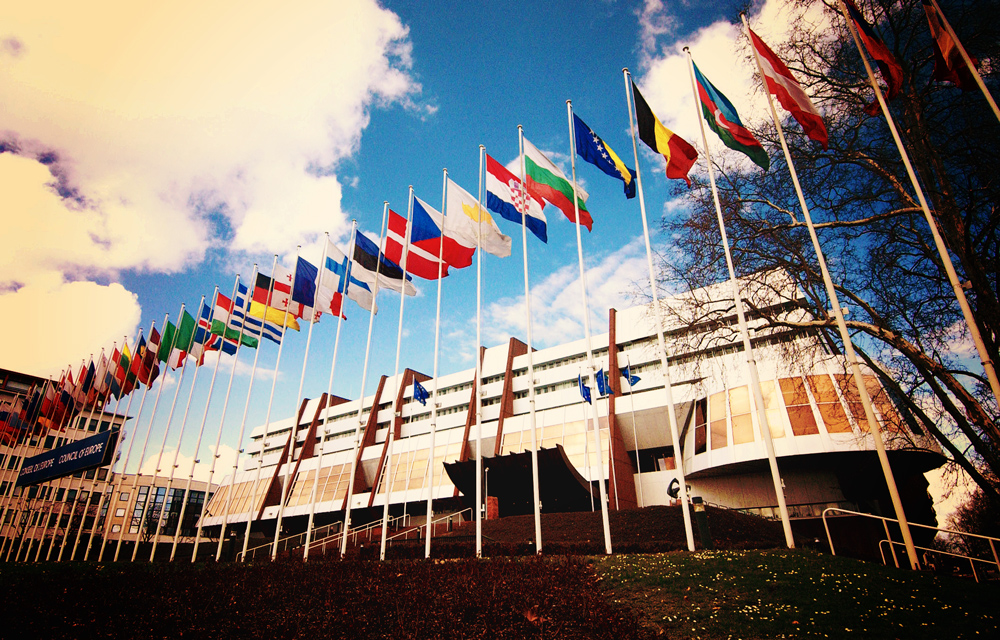Discours du Directeur

71st Session of the Sixth Committee of the General Assembly of the United Nations
Report of the International Law Commission on the work of its 68th Session
Cluster 1 (Chapters I, II, III, IV, V, VI and XIII)
Mr Chairperson,
Dear colleagues,
Ladies and gentlemen,
First and foremost, I would like to like to congratulate the International Law Commission for its comprehensive, interesting and well-drafted report prepared during its 68th Session. I would in particular thank the Commission’s President, Mr Commissário Afonso, for having presented the main trends of this report earlier this week. I would also like to express my gratitude to Mr Commissário Afonso for his participation in the 52nd meeting of the Council of Europe’s Committee of Legal Advisers on Public International Law (CAHDI).
I would also warmly thank the Bureau of the General Assembly’s Sixth Committee, as well as its Secretariat, for all the work and effort they have put together to make this 71st session a fruitful one.
Please allow me to make a few remarks in relation to Chapter V (identification of customary international law), Chapter VI (subsequent agreements and subsequent practice in relation to the interpretation of treaties) and Chapter XIII (Other decisions and conclusions of the Commission).
1. Chapter V (identification of customary international law)
With respect to the identification of customary international law, allow me first of all to thank the Special Rapporteur, Sir Michael Wood, for his excellent (four) reports prepared on this subject. Allow me also to thank him for his continuous and close cooperation with the Council of Europe. Pertaining to this item, draft conclusions 6 and 12 relating to the different forms of practice of the ILC’s report (pages 77 and 78) make reference to resolutions or declarations adopted or concluded within the framework of an international organisation or at an intergovernmental conference.
The Council of Europe agrees with the ILC that the practice developed within the framework of international organisations can indeed be useful in the identification of customary law. In this respect, we suggest including in the commentaries to these conclusions the example of our Declaration on “The Jurisdictional Immunities of State owned Cultural Property on Loan” launched within the framework of the CAHDI. This Declaration was elaborated in support of the recognition of the customary nature of the pertinent provisions of the 2004 United Nations Convention on Jurisdictional Immunities of States and Their Property. Its purpose is to guarantee the immunity of State cultural property on loan. The Declaration was presented in 2013 at the 46th meeting of the CAHDI as a non-legally binding document expressing a common understanding of opinio juris on the basic rule that a certain kind of State property (cultural property on exhibition) enjoyed jurisdictional immunity.
To date, it has been signed by the Ministers of Foreign Affairs of 18 States[1] (including a non-member State of the Council of Europe) with more signatures expected in the near future. The Declaration’s success can thus only be conducive to the further development in the identification of customary international law.
2. Chapter VI (the subsequent agreements and subsequent practice in relation to the interpretation of treaties)
First of all, I would like to thank the Special Rapporteur, Mr Georg Nolte, for his practical and thoroughly researched reports. The fourth report on the interpretation of treaties based on subsequent practice of the organs of the international organisations and expert treaty bodies is of particular importance to the Council of Europe. With respect to draft conclusion 13 (page 123 of the ILC’s report) on the pronouncement of expert treaty bodies, we concur with the role ascribed by the ILC to expert treaty bodies.
The Council of Europe has a long standing practice with expert treaty bodies, whose members serve in their personal capacity and are in charge of monitoring the implementation of the treaties. I can confirm that their contribution to the interpretation of treaties has been of great importance. Consequently, we suggest that the ILC’s report (page 229) should make reference to some independent monitoring bodies established within the framework of the Council of Europe conventions. In particular, the Group of Experts on Action against Violence against Women and Domestic Violence (GREVIO),[2] the Group of Experts on Action against Trafficking in Human Beings (GRETA),[3] the European Committee of Social Rights,[4] the Advisory Committee on the Framework Convention for the Protection of National Minorities[5] and the European Committee for the Prevention of Torture and Inhuman or Degrading Treatment or Punishment (CPT).[6]
The independent experts of these monitoring bodies have contributed to the interpretation of our conventions through their reports and comments.[7] The European Court of Human Rights (ECtHR) uses conclusions and recommendations of the independent human rights monitoring mechanisms. Through their integration into the Court’s case-law, they may acquire in some cases legally binding force. This approach, which is consistent with the idea of the ECHR as a living instrument, allows the ECtHR to develop its jurisprudence in line with commonly accepted standards.
3. Chapter XIII (other decisions and conclusions of the Commission – settlement of disputes to which international organisations are parties)
We would like to welcome the decision of the ILC to include the topic of the settlement of international disputes to which international organisations are parties in its programme of future work. As Sir Michael Wood mentioned in Annex A to the ILC report, the examination of this topic could be limited to the settlement of disputes between international organisations and States and between international organisations themselves.
Taking into account the Council of Europe’s existing work in this field, we would welcome the possibility of potentially widening the topic to include disputes of a private law character such as those arising under a contract or out of a tortious act by or against an international organisation. Indeed, as was acknowledged by Sir Michael Wood in (footnote 7 of) his report, the Council of Europe’s Committee of Legal Advisers on Public International Law has examined and continues to examine the settlement of disputes of third-party claims for personal injury or death and property loss or damage allegedly caused by an international organisation. The CAHDI is currently examining the replies by delegations to a questionnaire. Delegations have been asked to present the current state of this subject from their own national experience as well as possible measures to be adopted. To further encourage its fruitful discussions, the CAHDI has agreed to keep this issue on its agenda for its forthcoming meetings in 2017.
[1] Albania, Armenia, Austria, Belarus, Belgium, the Czech Republic, Estonia, Finland, France, Georgia, Hungary, Ireland, Latvia, Luxembourg, the Netherlands, Romania, Russia, and Slovakia.
[2] Set up under Article 66 of the Council of Europe Convention on preventing and combating violence against women and domestic violence (CETS No. 210).
[3] Set up under Article 26 of the Council of Europe Convention on Action against Trafficking in Human Beings (CETS No. 197).
[4] Set up under Article 25 of the European Social Charter [ETS No. 35] and Part IV Article C of the European Social Charter (revised) (ETS No. 163).
[5] Set up under Article 26 of the Framework Convention for the Protection of National Minorities (ETS No. 157).
[6] Set up under Article 1 of the European Convention for the Prevention of Torture and Inhuman or Degrading Treatment or Punishment (ETS No.126).
[7] See in particular the ‘CPT standards’ and the ‘Thematic commentaries of the Advisory Committee on the Framework Convention for the Protection of National Minorities’.



